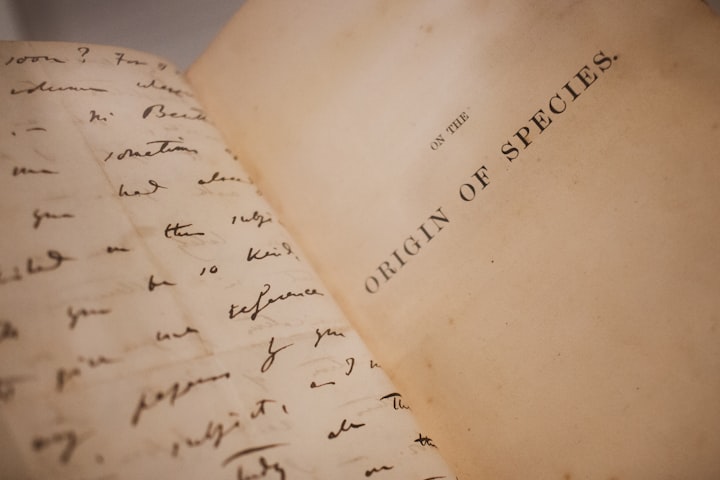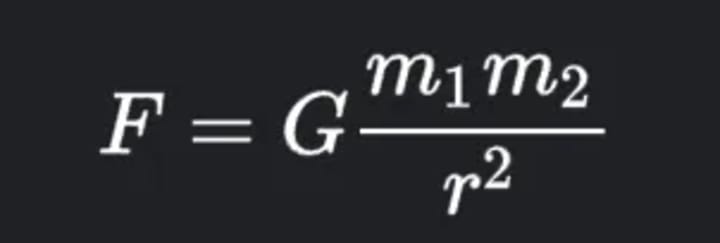Why is Evolution a Theory and Not a Law?
Exploring the Scientific Nuances: Evolution’s Status as Theory Versus Law

Folks, I have a pet peeve. The argument “Evolution is just a theory” absolutely drives me up the wall. When I chose evolutionary science as my focus in college, I figured that I’d need to be equipped to explain the evidence and educate folks in everyday life. Even with that preparation, though, I underestimated just how often I’d hear that specific phrase. It’s unnervingly common. When speaking with those who do not believe in the mechanism, it’s commonly one of the first arguments uttered upon discovery of the “Evolutionary” part of my educational journey. Well, it’s either that or “Climate Change isn’t real” — but I’ll save that rant for another article.
For efficiency, I’ve provided my explanation for this common argument below. Should you ever come across this argument online, in real life, or otherwise, I hope it, too, will be of value to you.
What is a Scientific Theory?
The word theory has a very specific meaning — one that’s rather different from how it’s used outside of the world of science. When our friendly folks in lab coats say something is a theory, they’re saying that the concept in question is well-substantiated, with a basis in an excellent collection of evidence, observations, experimentation, and logical reasoning. Scientists won’t call a concept a scientific theory until it has been extensively [and painstakingly] tested. Until the overall consensus, through peer review and repetition of experimentation by multiple teams, is corroborated, scientists will refrain from making a concept a theory.
The criteria for theory classification are both strict and detailed. For the classification to last in a scientific field it must be testable, replicable, consistent with other related scientific principles, and able to be disproven through experimentation. In addition, for it to be worth science’s time, it must provide a meaningful scientific explanation and successfully predict how scientific processes will occur in the future.
What is a Scientific Law?
Much like ‘theory’, ‘law’ has a precise definition within science, one which differs from other common uses of it. When a scientist speaks of a scientific law, they mean to say, “a statement of an order or relation of phenomena that so far as is known is invariable under the given conditions”. More simply put, scientific laws describe what phenomena happen in the natural world in the form of an equation or simple statement.
Similar to scientific theories, laws in the scientific world have a strict set of conditions to be officially classified by the term. For a statement or equation to be considered a law, it must be descriptive in nature, universally applicable under specific conditions, simple and succinct, consistent with other principles within science, and based on empirical evidence. Additionally, it must enable scientists to accurately predict the outcomes of related experiments.
What’s the Difference Between a Scientific Theory and a Scientific Law?
The idea that a scientific concept graduates from a theory to a law is a misconception. A scientific law isn’t a theory with more credentials, it’s a wholly different matter altogether. The two terms are used to describe different types of well-established facts in the scientific world: Scientific Laws are used to describe what happens; Scientific Theories are used to explain why or how something happens. So while both definitions are developed by repeated successful experimentation by the global community of researchers, they’re both useful and valid equal partners in the world of scientific understanding.
What Does it Mean When a Theory isn’t a Law?
When scientists classify a principle as a theory instead of a law, they’re essentially saying, “This principle is indeed well-supported by evidence and successfully provides a robust explanation for a phenomenon. It isn’t, however, distilled into a succinct mathematical expression and/or a simple statement which predicts what will occur in the future”. Theories can become laws, however, when this distillation does occur. But, it’s important to reiterate here that a theory is not worse than a law or less tested. Both require comparably extensive and detailed testing before they’re accepted as our current approximation of truth.
Gravity is an excellent example of this, as it has both a law and a theory.
The law of universal gravitation is: “Every particle in the universe attracts every other particle with a force that is proportional to the product of their masses and inversely proportional to the square of the distance between their centers.”
Or, if you prefer the equation instead of a statement (I know I do),

And then, compare that to the theory which currently describes why gravity occurs (the theory of general relativity):
“Gravity is the result of the distortions in spacetime created by a combination of the body’s mass and its energy”. It is truly not a force of attraction, but a warping of both space and time, which alters the “space-time fabric” of our universe.
While both of these principles are useful for us, they have a clear difference — the law of gravity is a what explanation; the theory of gravity is a how explanation. A difference they do not have, however, is their level of usefulness. Both the law and the theory are approximations of truth, given our ability to measure it.
A Note: Though often used to illustrate a general approximation of the effects of gravity in most cases, the law above is technically less correct than the theory of gravity also shown above. In the case of these two principles, the theory is a better representation of reality than the law.
What is the Theory of Evolution?
The theory of evolution, proposed by the famous/infamous Charles Darwin, explains how populations of species change over time. It’s driven by natural selection, where organisms with advantageous traits are more likely to survive and, as a consequence, reproduce more offspring than their less advantageously-traited competitors. This, after generations, leads to adaptation and the divergence of species so that new sorts of creatures are formed from a single ancestral species (called speciation).
Evolution isn’t a law, but that fact is not because of some lack of evidence or missing pieces to the puzzle. Instead of explaining what is occurring in the form of a simple equation or succinct statement, like a scientific law does, the statement describes the mechanisms and processes, or why significantly documented observations are occurring. The field of evolutionary science, though remarkably well understood and substantiated, has not yet developed a single overarching equation that encapsulates every aspect of it. There are, however, equations used within the field (e.g. The Price Equation & The Breeder’s Equation) that encapsulate broad sections of it.
If you’d like to hear more about these equations and others, let me know. I’d love to nerd out about them in a future article. They’re super neat.
The Evidence Which Supports the Theory of Evolution
Evolution has an incredible amount of evidence that supports it — enough to grant it the prestigious and highly sought-after title of “Scientific Theory”. The fossil record is perhaps one of the most flashy cases for evolution, with dramatic ancient forms that are no longer seen today, gradually transitioning into the anatomy of modern Earth forms as one travels through the strata temporally. A remarkably small percentage (Less than one-10th of 1%) of living creatures become fossils and, even with those remarkably small numbers, we still have numerous and exquisite examples of species that illustrate the diversions of lineages over time.
Though most well-known, the fossil record is most certainly not the only evidence that supports evolution’s validity. Comparative anatomy, or the “study of similarities in the anatomical structure of different species” has been used to greatly bolster the theory as well. Homologous structures are features of anatomy that different species share due to common ancestry. Though the whole of these structures have different functions from species to species (e.g. the wing of the bird used for flight versus the fin of a whale used for swimming), the individual components that make up the entire structure are strikingly similar to each other.
Both of the above pieces of evidence were made even more significant via the use of molecular and genetic biology. These studies have allowed scientists to identify how closely related species are to each other by the comparison of DNA, proteins, and other molecular structures between two organisms of different species. Using ever-improving tools within these subsections of science, we’ve been able to map the origin of life on Earth in incredible detail.
Finally, we can see evolution in action when we look in the right place. Since you’ve been alive, we’ve seen exquisite examples of organism population traits changing. When a species of bacteria becomes resistant to a specific antibiotic, that’s evolution in action. When bed bugs become resistant to a pesticide that previously killed them, that’s also evolution. And, when species of insect-dependent flowers begin to adopt self-pollination tactics in greater frequency over generations, that’s evolution too.
The Age-Old “Theory” Misconception
There’s quite the misconception that “theory” means something uncertain or speculative in the world of science. The general definition used outside of science has certainly muddied the waters here. When most of us use the word theory, we mean an “untested guess or a hunch”, the scientific version of theory is far from that. Unfortunately, theory and theory are one of those strange artifacts of the English language that sound the same, are spelled the same, and mean something completely different (They’re called Homonyms, in case you’re curious).
--
Understanding the distinction between scientific theory and law is critical, especially if you seek to better understand science and, as a result, our universe. The Theory of Evolution, despite being labeled as “just a theory” by some, is truly a cornerstone of modern biology, with a significant wealth of information supporting its validity. By recognizing the value of scientific theories and, as a society, managing to successfully digest that a scientific theory isn’t less than a scientific law, we can push our understanding further together.
--
P.S. If you happen to be interested in learning more about evolution and the vast amount of evidence that supports it, check out the resources below. They go into far more detail than I can in the scope of this single article, and they’re also incredible reads!
Undeniable: Evolution and the Science of Creation | Bill Nye
The Greatest Show on Earth: The Evidence for Evolution | Richard Dawkins
The Beak of the Finch: A Story of Evolution in Our Time | Jonathan Weiner
About the Creator
Olivia L. Dobbs
Science Enthusiast, Naturalist, Dreamer, Nerd.
I crosspost my Medium articles here :)
You can find my main account on Medium: https://medium.com/@oliviadobbs13
Check out my science! -> bit.ly/DobbsEtAl






Comments
There are no comments for this story
Be the first to respond and start the conversation.